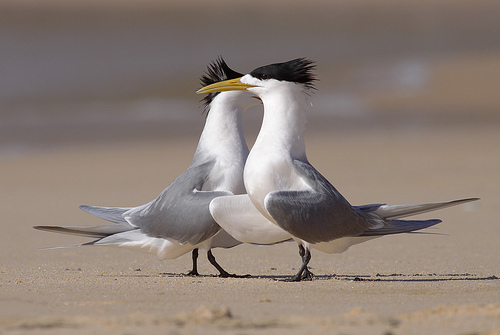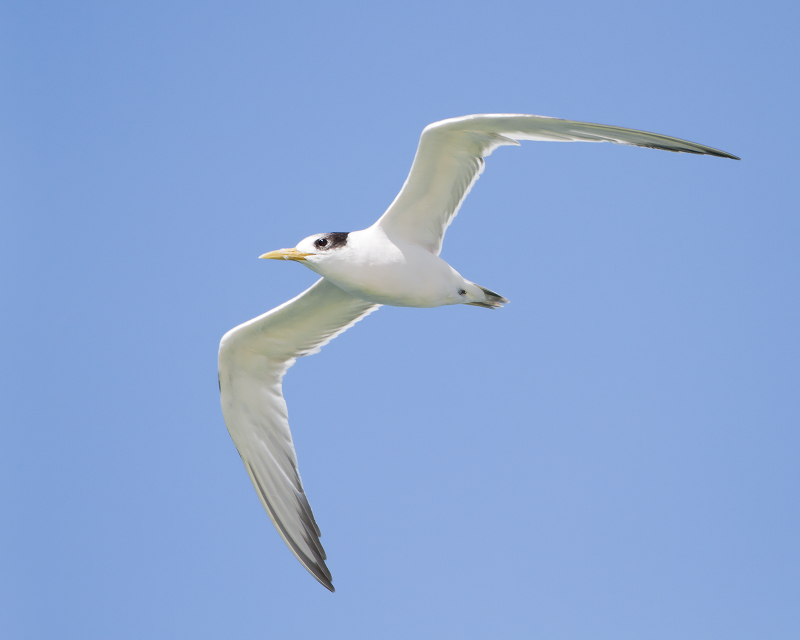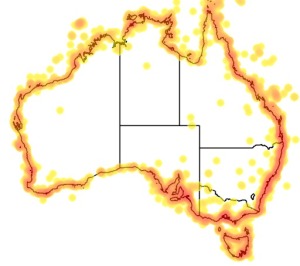Colours
Distinguishing features
The forehead and the underparts are white, the back and inner wings are dusky-grey. In winter, the upperparts plumage wears to a paler grey, and the crown of the head becomes white, merging at the rear into a peppered black crest and mask.
The adults of both sexes are identical in appearance, but juvenile birds are distinctive, with a head pattern like the winter adult, and upperparts strongly patterned in grey, brown, and white; the closed wings appear to have dark bars. After moulting, the young terns resemble the adult, but still have a variegated wing pattern with a dark bar on the inner flight feathers. (Wikipedia)
Size
- From 46 cm to 49 cm (Length of specimen)
Weight
- From 0.32 kg to 0.4 kg
Wingspan
- From 125 cm to 130 cm
Synonyms
Comments
by Gaia Guide
Distribution
Distribution and habitat preferences
It occurs in tropical and warm temperate coastal parts of the Old World from South Africa around the Indian Ocean to the Pacific and Australia.
When not breeding, it will roost or rest on open shores, less often on boats, pilings, harbour buildings and raised salt mounds in lagoons. It is rarely seen on tidal creeks or inland waters.
All populations disperse after breeding. (Wikipedia)
Audio recordings
Diet
Fish are their main food, found to make up nearly 90% of all prey items with the remainder including cephalopods, crustaceans and insects.
It feeds mostly at sea by plunge diving to a depth of up to 1 m, or by dipping from the surface, and food is usually swallowed in mid-air. (Wikipedia)
Web resources
References
- Blaber, S.J.M., D.A. Milton, M.J. Farmer and G.C. Smith (1998). Seabird breeding populations on the far northern Great Barrier Reef, Australia: Trends and influences, Emu, 98: 44-57. LIRS catalog number 662.
- Blaber, S.J.M., D.A. Milton, G.C. Smith and M.J. Farmer (1995). Trawl discards in the diets of tropical seabirds of the northern Great Barrier Reef, Australia, Marine Ecology Progress Series, 127: 1-13. LIRS catalog number 433.
- Brown, A.L. and R. Mathers (1990). Measuring the effect of aircraft noise on seabirds, Environment International, 16: 587-592. LIRS catalog number 292.
- View all references




